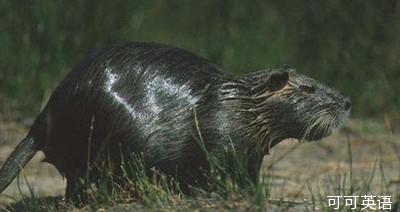Science and technology
科学技术
Invasive species
侵略性物种
Thorny questions
棘手问题
The ecological effects of buckthorn in North America
北美鼠李属植物的生态影响
CONSERVATIONISTS, being by definition conservative, usually view the introduction of new species into an environment with horror.
生态环境保护者,从定义上看就偏于保守,常对固有环境中新物种的引入恐惧不已。
If such a species is successful, it is described as invasive—a rather pejorative word.
一种新物种一旦引入成功,它常常具有侵略性—一个含贬义的词语。
But how much change such species actually cause is often moot.
然而,这些物种究竟造成环境多少改变?
So two recent studies of European buckthorn in North America, which attempt to find this out, are a welcome shaft of light on the debate.
常常引来争论。最近对鼠李属植物的两项研究有助于搞清这一问题。所以该研究在这场争论中受人瞩目。
Buckthorn was imported from Europe to America in the 19th century, to make garden hedges.
鼠李属植物在19世纪从欧洲出口到美国,用来制作花园围篱。
 Since then it has spread through the country's woodlands, which many naturalists think has been bad for local wildlife.
Since then it has spread through the country's woodlands, which many naturalists think has been bad for local wildlife.
从那时起,它席卷了美国林地。在许多自然主义者眼中,它对当地野生物种产生了不利影响。
The new studies suggest they are right—if you are a frog or a small bird.
但新的研究证明他们的观点仅适用于青蛙或是小鸟。
If you are a coyote or a raccoon, though, buckthorn is a good thing.
对于土狼和浣熊,鼠李属植物可是好东西。
Seth Magle, of Lincoln Park Zoo, in Chicago, suspected these predators are commoner where buckthorn grows.
赛思在芝加哥林肯动物园工作,他认为在鼠李属植物生长的地方,这些食肉动物是常客。
He therefore set up motion-activated cameras in 35 woods near the city.
于是他在芝加哥周围的35处丛林中架设了移动追踪照相机。
Some sites had a lot of buckthorn. Some did not.
一些丛林鼠李属植物繁盛,一些则不然。
He did indeed find more coyotes and raccoons where buckthorn is common—particularly in spring, when birds are nesting.
在鼠李属植物常见地区,他的确发现了更多土狼和浣熊,—尤其是春天,鸟儿筑巢的时节。
Buckthorn is notorious for overshadowing other plants and thus inhibiting their growth.
鼠李属植物臭名昭著,因为它遮挡其他植物,继而抑制其生长。
That thins the forest understorey and increases visibility which, Dr Magle reckons, helps predators spot nests that denser vegetation would hide.
玛格拉博士认为,森林下层林木由此变稀薄,能见度增加。这有利于肉食动物找到能被密集植物隐藏的巢穴。
So the predators come looking.
于是,肉食动物前来寻找。
Besides overshadowing its neighbours, buckthorn also engages in chemical warfare.
鼠李属植物除了挡住了他的邻居,还参与了化学战争。
Its leaves are full of a toxin called emodin that discourages browsers.
它的叶子充满了一种名为大黄素的毒素,使得食草动物望而却步。
Allison Sacerdote-Velat, one of Dr Magle's colleagues at Lincoln Park Zoo, and Richard King of Northern Illinois University, wondered what effect this chemical has on the world when the leaves fall off.
阿里森,和北部伊利诺斯州大学的瑞查德,均好奇当叶子脱落后,这种化学物对地面有何影响。
Emodin, they found, when they tested it on frogspawn, kills embryonic frogs. And when they analysed some local ponds, they discovered the chemical in them. Amphibian numbers have been falling in many places, including America, and many causes have been suggested. Emodin is surely not the only one. But it probably does not help.
他们在对蛙卵的实验中发现,大黄素可以杀死胚胎期的青蛙。他们又调查了一些当地的池塘,发现大黄毒蕴含其中。包括美国在内的许多地方,两栖类动物数量均在下降,其原因有许多。大黄毒毫无疑问并非唯一原因,但它也不大可能起到什么好的作用。












